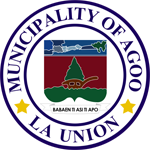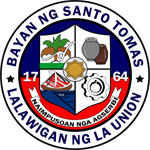Bacnotan District Hospital Personnel Enhance Skills in Basic Life Support
[wp-svg-icons icon="user" wrap="span"] By: Melanie Holt | [wp-svg-icons icon="camera" wrap="span"] By: Melanie Holt | [wp-svg-icons icon="calendar" wrap="span"] Date: September 6-7, 2018
Personnel of Bacnotan District Hospital (BDH) demonstrate their skills in Cardiopulmonary Resuscitation (CPR) on a dummy infant during the Basic Life Support (BLS) Training on September 6, 2018 at the said hospital. Such training is regularly conducted among hospital personnel to refresh their life-saving expertise in times of emergencies and in return impart these to people in the community as part of the strategic project of the hospital, “Provision of First Aid and Basic Life Support (BLS) Training to residents of the Central Agri-Tourism Circuit.”
With the aim to capacitate employees of Bacnotan District Hospital in life-saving techniques, they participated in the Basic Life Support (BLS) Training conducted by Ilocos Training Regional and Medical Center – Health Emergency Management Staff (ITRMC – HEMS) at BDH, Bacnotan, La Union on September 6 – 7, 2018.
“We are committed to continuously hone the skills of our personnel to make them more competitive and more able in teaching people in the community especially in the tourism sites as our contribution in the vision of the governor in making the province to be the Heart of Agri-Tourism in Northern Luzon by 2025,” said BDH Chief Dr. Zenserly D. Pagaduan.
Such BLS training for healthcare providers is regularly conducted among hospital personnel to refresh their life-saving expertise in times of emergencies. In return, they will impart these to people in the community as part of the strategic project of the hospital, “Provision of First Aid and Basic Life Support (BLS) Training to residents of the Central Agri-Tourism Circuit.”
This strategic project of BDH was done to equip the locals with basic knowledge, skills and attitude to perform with confidence the basic life support techniques to save lives; to reduce time-related causes of aggravating issues from receipt of injury to initiation of medical care since this is one of the most important elements in the prevention of death and further complications; and to reduce complications brought about by the lack of skills of the rescuers immediately handling such emergencies.
A total of 20 personnel were trained. Principles of emergency care; Introduction to BLS; use of automated external defibrillator; removal of foreign body airway obstruction, rescue breathing, and cardio-pulmonary resuscitation (CPR) were among the topics taught. Return demonstrations on rescue breathing and CPR of infant and adult were specifically performed.
[Fancy_Facebook_Comments]



















